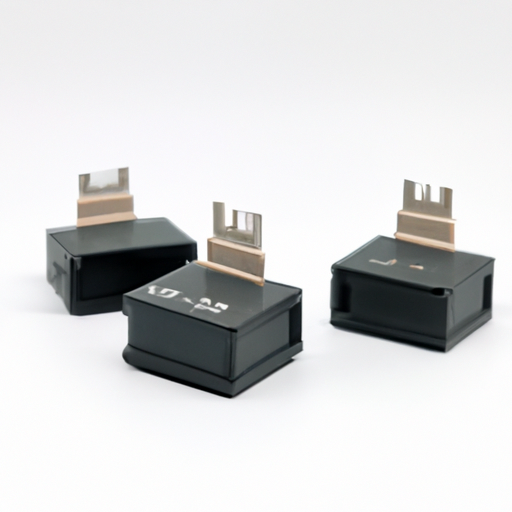What is the function of a resistor and what kind of product is it?
What is the Function of a Resistor and What Kind of Product is It?
I. Introduction
In the world of electronics, resistors play a crucial role in the functionality and reliability of circuits. A resistor is a passive electrical component that limits or regulates the flow of electrical current in a circuit. By doing so, it protects sensitive components, divides voltages, and shapes signals, making it an indispensable part of both simple and complex electronic systems. This article will delve into the function of resistors, the different types available, their characteristics, applications, and how to select the right resistor for your needs.
II. Understanding Resistors
A. Basic Concept of Resistance
At the heart of understanding resistors is the concept of resistance, which is the opposition to the flow of electric current. The relationship between voltage (V), current (I), and resistance (R) is defined by Ohm's Law, which states:
\[ V = I \times R \]
This equation illustrates that the voltage across a resistor is directly proportional to the current flowing through it, with resistance as the proportionality constant. The unit of measurement for resistance is the ohm (Ω).
B. Types of Resistors
Resistors come in various types, each designed for specific applications:
1. **Fixed Resistors**: These resistors have a constant resistance value and are the most common type used in circuits. They are available in various resistance values and power ratings.
2. **Variable Resistors**: Also known as potentiometers or rheostats, these resistors allow for adjustable resistance. They are often used in applications where tuning is necessary, such as volume controls in audio equipment.
3. **Specialty Resistors**: These include thermistors (temperature-sensitive resistors), photoresistors (light-sensitive resistors), and others designed for specific functions in electronic circuits.
III. The Function of a Resistor
A. Current Limiting
One of the primary functions of a resistor is to limit the current flowing through a circuit. This is particularly important in protecting sensitive components from excessive current that could lead to damage. For example, in LED circuits, resistors are used to ensure that the current does not exceed the LED's maximum rating, thereby prolonging its lifespan.
B. Voltage Division
Resistors can also be used to create voltage dividers, which are circuits that produce a specific output voltage that is a fraction of the input voltage. This is useful in applications where reference voltages are needed, such as in sensor circuits where a specific voltage level is required for accurate readings.
C. Signal Conditioning
In analog circuits, resistors play a vital role in signal conditioning. They can filter and shape signals, ensuring that the output is suitable for further processing. For instance, resistors are used in combination with capacitors to create low-pass or high-pass filters, which allow certain frequencies to pass while attenuating others.
D. Biasing Active Devices
Resistors are essential for biasing active devices like transistors. Proper biasing ensures that transistors operate in their optimal range, which is crucial for amplifiers and other signal processing applications. By setting the correct biasing conditions, resistors help maintain the stability and performance of these devices.
IV. Resistor Characteristics
When selecting a resistor, several characteristics must be considered:
A. Resistance Value
The resistance value, measured in ohms, determines how much current will flow through the resistor for a given voltage. It is essential to choose the correct resistance value for the specific application.
B. Power Rating
The power rating indicates the maximum amount of power (in watts) that a resistor can dissipate without being damaged. Exceeding this rating can lead to overheating and failure.
C. Tolerance
Tolerance refers to the allowable deviation from the specified resistance value. It is usually expressed as a percentage and indicates how precise the resistor is. For example, a resistor with a tolerance of ±5% can have a resistance value that varies by 5% from its nominal value.
D. Temperature Coefficient
The temperature coefficient indicates how much the resistance value changes with temperature. This is crucial in applications where temperature fluctuations are expected, as it can affect the performance of the circuit.
E. Physical Size and Packaging
Resistors come in various physical sizes and packaging types, including through-hole and surface-mount configurations. The choice of packaging depends on the specific application and the available space on the circuit board.
V. Applications of Resistors
Resistors are ubiquitous in various industries and applications:
A. Consumer Electronics
In consumer electronics, resistors are found in devices such as smartphones, tablets, and home appliances. They help regulate current, divide voltages, and ensure the proper functioning of circuits.
B. Industrial Applications
In industrial settings, resistors are used in automation and control systems, as well as in power management applications. They help maintain the stability and reliability of complex systems.
C. Automotive Industry
In the automotive industry, resistors are critical components in engine control units and safety systems. They help manage electrical signals and ensure the proper operation of various systems within the vehicle.
D. Telecommunications
In telecommunications, resistors are used in signal processing and network equipment. They help condition signals for transmission and ensure that data is accurately processed and relayed.
VI. Selecting the Right Resistor
A. Factors to Consider
When selecting a resistor, several factors must be considered:
1. **Application Requirements**: Understand the specific needs of your circuit, including the required resistance value, power rating, and tolerance.
2. **Environmental Conditions**: Consider the operating environment, including temperature fluctuations and humidity, which can affect resistor performance.
B. Common Mistakes in Resistor Selection
One common mistake is selecting a resistor with an insufficient power rating, leading to overheating and failure. Additionally, failing to account for tolerance can result in unexpected circuit behavior.
C. Tools and Resources for Selecting Resistors
There are various online calculators and databases available to help engineers and hobbyists select the right resistor for their applications. These tools can assist in determining the appropriate resistance value, power rating, and other characteristics.
VII. Conclusion
Resistors are fundamental components in the world of electronics, serving various functions that are essential for the proper operation of circuits. From limiting current and dividing voltages to conditioning signals and biasing active devices, their importance cannot be overstated. As technology continues to evolve, so too will resistor technology, with advancements aimed at improving performance, efficiency, and reliability. Understanding the role of resistors in modern electronics is crucial for anyone involved in the design and development of electronic systems.
VIII. References
For further exploration of resistors and their applications, consider the following resources:
1. "The Art of Electronics" by Paul Horowitz and Winfield Hill
2. "Electronic Principles" by Albert Malvino and David Bates
3. IEEE Standards Association guidelines on electronic components
4. Online resistor calculators and databases for practical applications
By understanding the function and characteristics of resistors, you can make informed decisions in your electronic projects, ensuring optimal performance and reliability.







